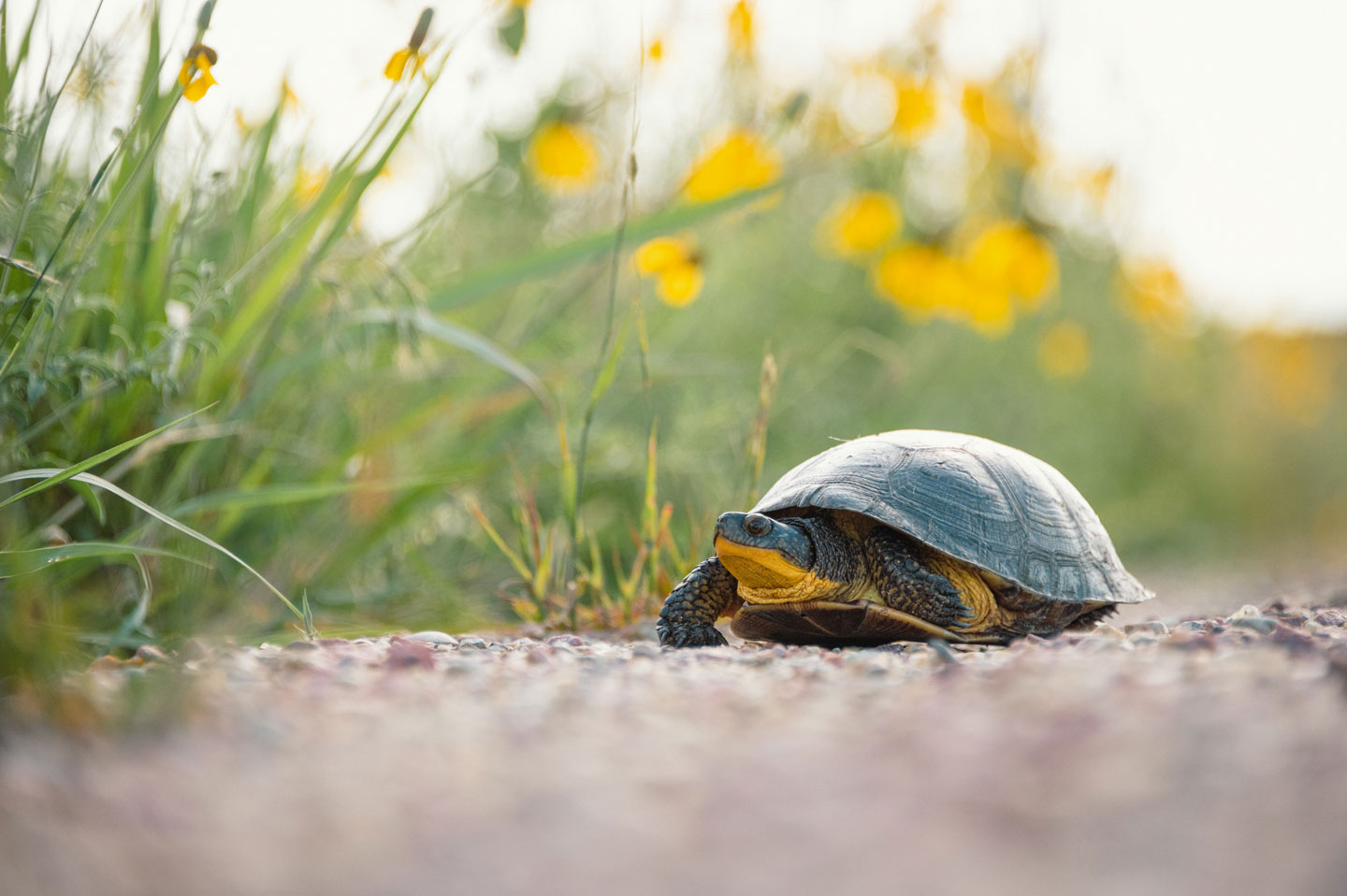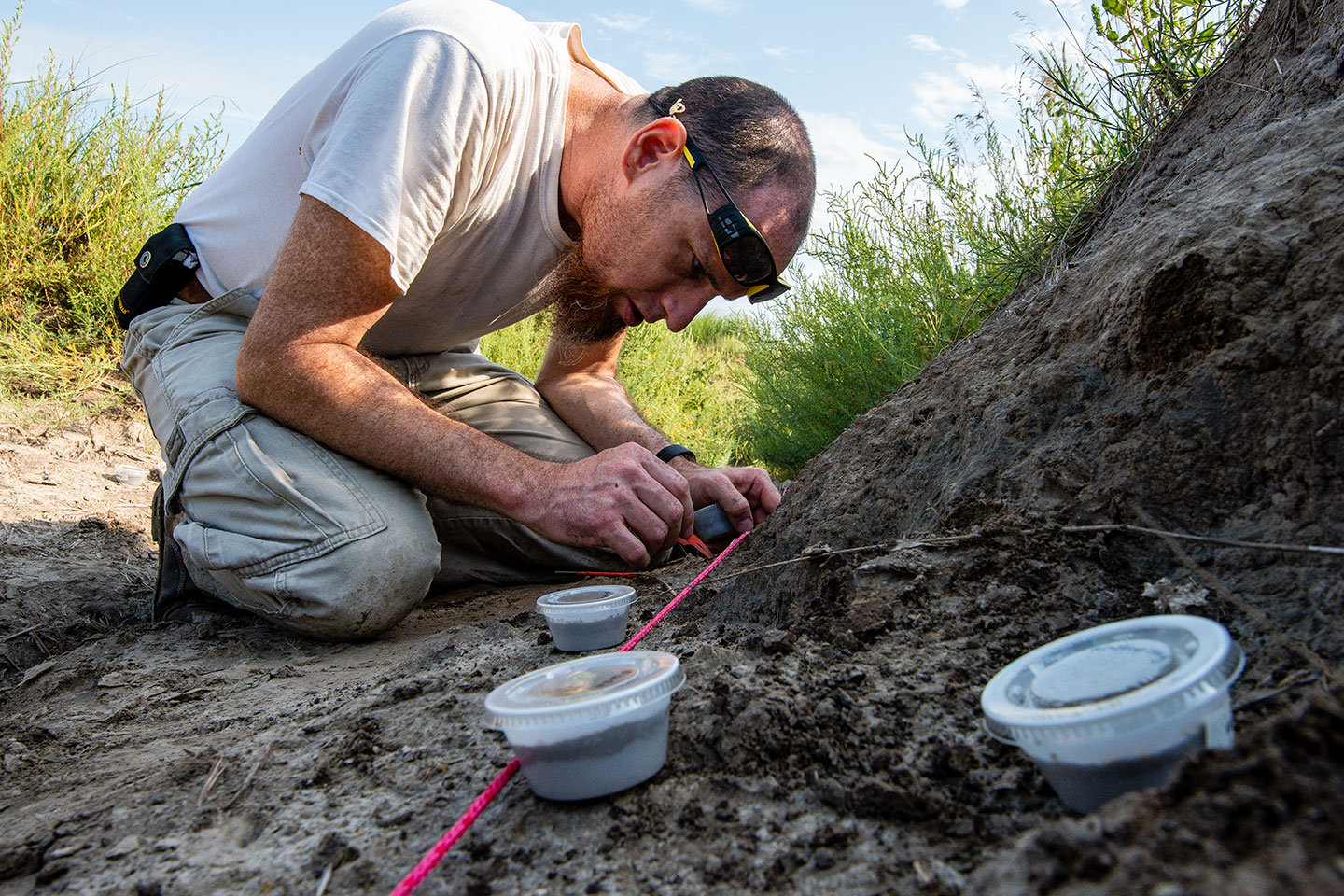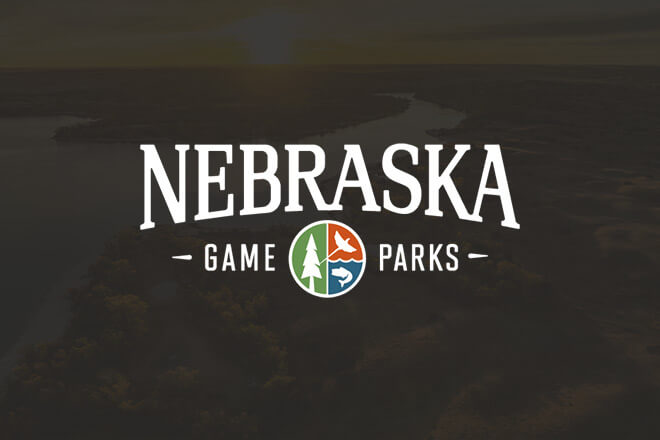Pallid & lake sturgeon
Status: Threatened
Sturgeon, as a species, have been around for more than 150 million years and existed during the Jurassic Era, when dinosaurs roamed the earth. These fish are considered living fossils, having changed little from their ancestors.
Sturgeon have long, torpedo-shaped bodies; long, bony snouts; and are armored with five rows of sharp, bony plates called scutes. The sturgeons have a distinctive flattened head, on the bottom of which is found the sucker-like mouth and four barbels hanging down. The barbels help them locate food and find their way. The intestine of a sturgeon is similar in structure to that of sharks in that it has a spiral valve, which forces the food to follow a spiral path during digestion.
Both pallid and lake sturgeons have developed small eyes and larger outer barbels, apparently adaptations for feeding in turbid or muddy water, their preferred habitat.
Lake sturgeon (Acipenser fulvescens) have short, rounded snouts compared to those of our other sturgeon species. Also, the four barbels on a lake sturgeon are smooth and not fringed or serrated. Adult lake sturgeon are solid dark brown or slate-colored with a white belly. As the name implies, the pallid sturgeon (Scaphirhynchus albus) is a very pale gray color overall.
The pallid and lake sturgeon are very long-lived fish and mature slowly. Lake sturgeon can reach eight feet in length and a weight of 300 pounds. One long-lived lake sturgeon lived to 150 years. Pallid sturgeon can live more than 40 years, reach five to six feet in length and weigh up to 65 pounds. In the Missouri River along the Nebraska border, they rarely exceed 10 pounds.
Range
Pallid sturgeon are primarily found in the Mississippi River from Louisiana upstream to Iowa and in the Missouri River from its confluence with the Mississippi upstream to Great Falls, Mont. Pallid sturgeon also have been captured in downstream reaches of several major tributaries of the Missouri River, such as the Platte Big Sioux, James, and Niobrara Rivers.
The lake sturgeon can be found in the Mississippi and St. Lawrence River drainages north into Canada but has rarely been collected from the lower Platte River and is uncommon in the Missouri River bordering Nebraska. As their name implies, lake sturgeon inhabit large lake regions, such as Hudson Bay and the Great Lakes, in addition to river systems. Lake sturgeon may be capable of extremely long migrations but are prevented by natural barriers and human alteration of river and lake systems.
Habitat
Pallid sturgeon tend to select main channel habitats in the Mississippi River stretch and main channel areas with islands or sand bars in the upper Missouri River system, including the Platte.
Pallid sturgeons have adapted to living close to the bottom of large rivers with high turbidity (muddy) and seasonal fluctuations in water level. Their preferred habitat has a diversity of depths and velocities formed by braided channels, sand bars, islands, sand flats and gravel bars.
Reproduction
Male pallids do not reproduce until they are 7 to 9 years old; female pallids don’t reach reproductive age until they are at least 9 years of age. Pallid sturgeon males spawn every 2 to 3 years, while females on a 3- to 5-year cycle. Reproductive pallid sturgeon generally move upstream beginning in the late fall and spawn in the spring and early summer (March through June). Pallid sturgeon spawn over open gravel beds or other hard bottom surfaces. The eggs take five to eight days to hatch; shortly after hatching the larvae become buoyant and drift with the current.
Lake sturgeon do not reproduce until they are quite mature, males typically at 14-16 years, while females mature at 24-26 years. In addition, males spawn annually or biennially while females may spawn every 3-6 years. Lake sturgeon will move great distances to spawn, which occurs from late April to late June. Adhesive eggs are scattered and attach to gravel, rocks and snags.
Population status
The pallid sturgeon was listed as a federally endangered species in 1990 because of extensive habitat modification, a lack of reproduction, commercial harvest and hybridization with shovelnose sturgeon.
Lake sturgeon are listed as either threatened or endangered by 19 of the 20 states within its original range in the United States. In Nebraska it is now listed as an endangered species.
Today, much of the Missouri River, upstream of Gavins Point Dam, is “lake-like,” with no moving water. An overabundance of non-native fish, combined with changes in river flow and water quality have all played a role in the decline of pallid and lake sturgeon populations. These changes also directly affect the resource (food) base these fish depend on for all life stages. Adding to the problem of habitat decline, is their poor reproductive success and low, or no, recruitment of wild juveniles to the adult population. The fish that are reproductively mature today were all spawned before construction of the dam systems, and are thought to be nearing the end of their lifespan. It is speculated that a single sturgeon at spawning time is already having a hard time finding a mate.
Management and outlook
The U.S. Fish and Wildlife Service designated four “Recovery Priority Management Areas” within the length of the Missouri River. These areas include the mouth of the Platte River.
Recovery efforts use strategies such as protection from harvest, protection of habitat and stocking of hatchery-raised fish. Pallid sturgeon have been stocked in the Missouri and Platte rivers in an attempt to help their recovery.
During research and monitoring studies, pallid sturgeon have been caught during spring, summer and fall months of the year on the lower Platte River, indicating the importance of the lower Platte to several life stages of the fish. Ensuring high spring flows that scour deeper channels and deposit sandbars are critical to creating and maintaining the habitats favored by pallid sturgeon in the Missouri and Platte rivers.
Fish and wildlife agencies are working with the U.S. Army Corps of Engineers and many other state and federal organizations to better regulate flows on the Missouri River for the benefit of several threatened and endangered species.
A Platte River study evaluating pollution levels in sturgeon stated that “Pallid sturgeon may be especially at risk to contaminants in the lower Platte River that bio-accumulate and cause reproductive impairment because they eat more fish and are a long-lived species.”
Conservation help
Part of the pallid sturgeon recovery plan includes stocking of fish from hatcheries to supplement wild populations. In addition, several hatchery-reared pallids have been implanted with tiny radio transmitters to determine movements and habitat use. Today, evidence indicates that hatchery raised pallids are surviving, growing, reaching reproductive maturity and now spawning. However, habitat restoration will be essential to realize the recovery of this species and other sturgeon species, as well.
References
Dryer, M.P., and Sandvol, A.J., 1993, Recovery plan for the pallid sturgeon (Scaphirhynchus albus): U.S. Fish and Wildlife Service, 55 p.
DeLonay, A.J., et al. 2009, Ecological requirements for pallid sturgeon reproduction and recruitment in the Lower Missouri River: A research synthesis 2005–08: U.S. Geological Survey Scientific Investigations Report 2009–5201, 59 p.
Schwarz, M. S., et al. 2006. A health risk evaluation for pallid sturgeon (Scaphirhynchus albus) in the lower Platte River using shovelnose sturgeon (Scaphirhynchus platorynchus) as a surrogate. U.S. Fish and Wildlife Service, Division of Environmental Quality, Region 6, Final Report, Grand Island, NE.
Peters, E. J., and J. E. Parham. 2008. Ecology and management of sturgeon in the lower Platte River, Nebraska. Nebraska Game and Parks Commission, Nebraska Technical Series No. 18, Lincoln, Nebraska.
Gordon, R. P., T. L Wirth, C. W. Threinen, S. Hickey. 1974. The lake sturgeon: its life history, ecology and management. Wisconsin Dept of Natural Resources, Madison, Wis. : Dept. of Natural Resources. no. 4-3600(74).
NOTE: New data of the occurrence and distribution of this species are being collected constantly and some of the information in the pamphlet may be outdated. The information here should be used for a general understanding of the species and not as the sole source of range location for any report, project, regional or local planning, or for environmental impact assessments. For the latest information on this species, please contact the Nebraska Game and Parks Commission, Wildlife Division.




